3 Days Lisbon Itinerary
If you are soon going to visit Lisbon in 3 days during a weekend or a Portugal itinerary, then you are in the right place! In this article I explain everything you need to know to discover the city at your own pace over a long weekend.
Lisbon is one of my favorite destinations for a 3-day weekend and I will explain to you right away how to organize your days 🙂
Lisbon is a really pleasant city to discover and you will immediately understand why with my itinerary to visit Lisbon and discover all the must-see places in the city.
Table of Contents
Day 1: The Belém district
We start this itinerary straight away to visit Lisbon in 3 days by heading towards Belém, a picturesque district to the west of the city.
You can get there easily from Praça do Comércio, the city’s most important square, by taking the E15 tram. It will take approximately 35 minutes to reach Belem.
Belém Tower and Jerónimos Monastery
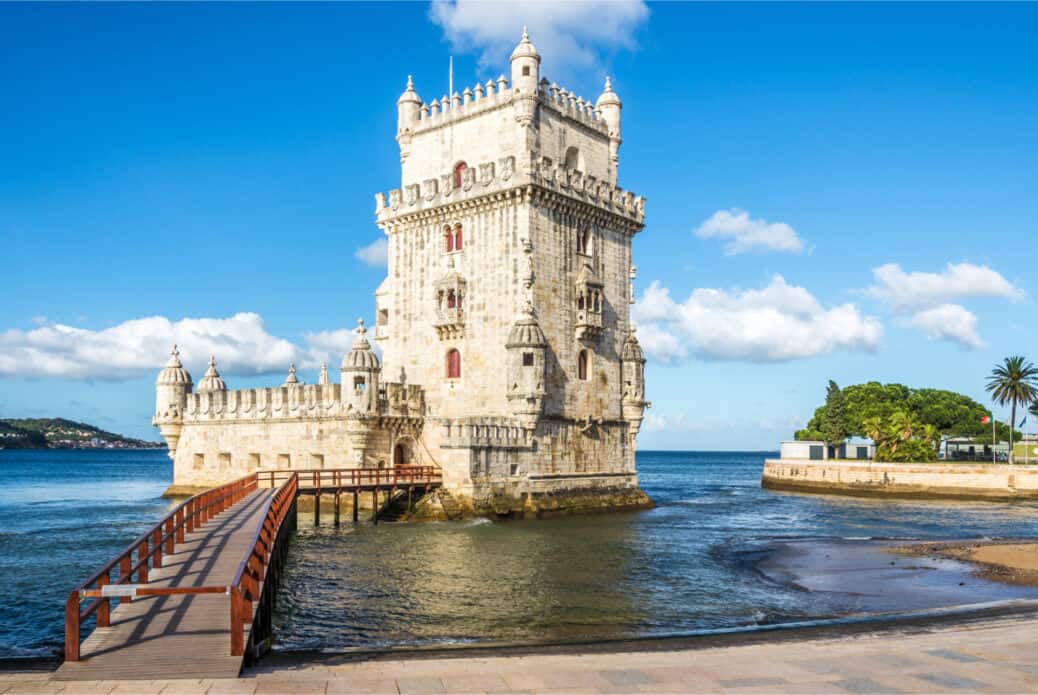
We come here to visit the Belém Tower and the Jerónimos Monastery. Belém Tower is a 16th century fort that served to protect Lisbon from attacks and invasions.
Today it is a must-see during a visit to Lisbon and it is the emblem of the city. It’s quite a touristy place and there are almost all the time in the world and long queues to visit the interior. This is why I advise you to take your seats as soon as possible.
Click here to book your Belém Tower ticket
Right next door, there is a second must-see building, the Mosteiro dos Jeronimos (Jerónimos Monastery). For me, if you only have one building to visit in Lisbon, it’s this one!
The Monastery is magnificent both outside and inside. It’s really something to see! All the sculptures and decorations, it is the best example of Manueline style architecture. I won’t tell you more, it’s worth seeing in real life.
On the other hand, there is a queue of 2 to 3 hours each time. Really it’s not a joke, both in February and in the middle of July, there are always people at the Jerónimos Monastery, I advise you to reserve your place in advance.
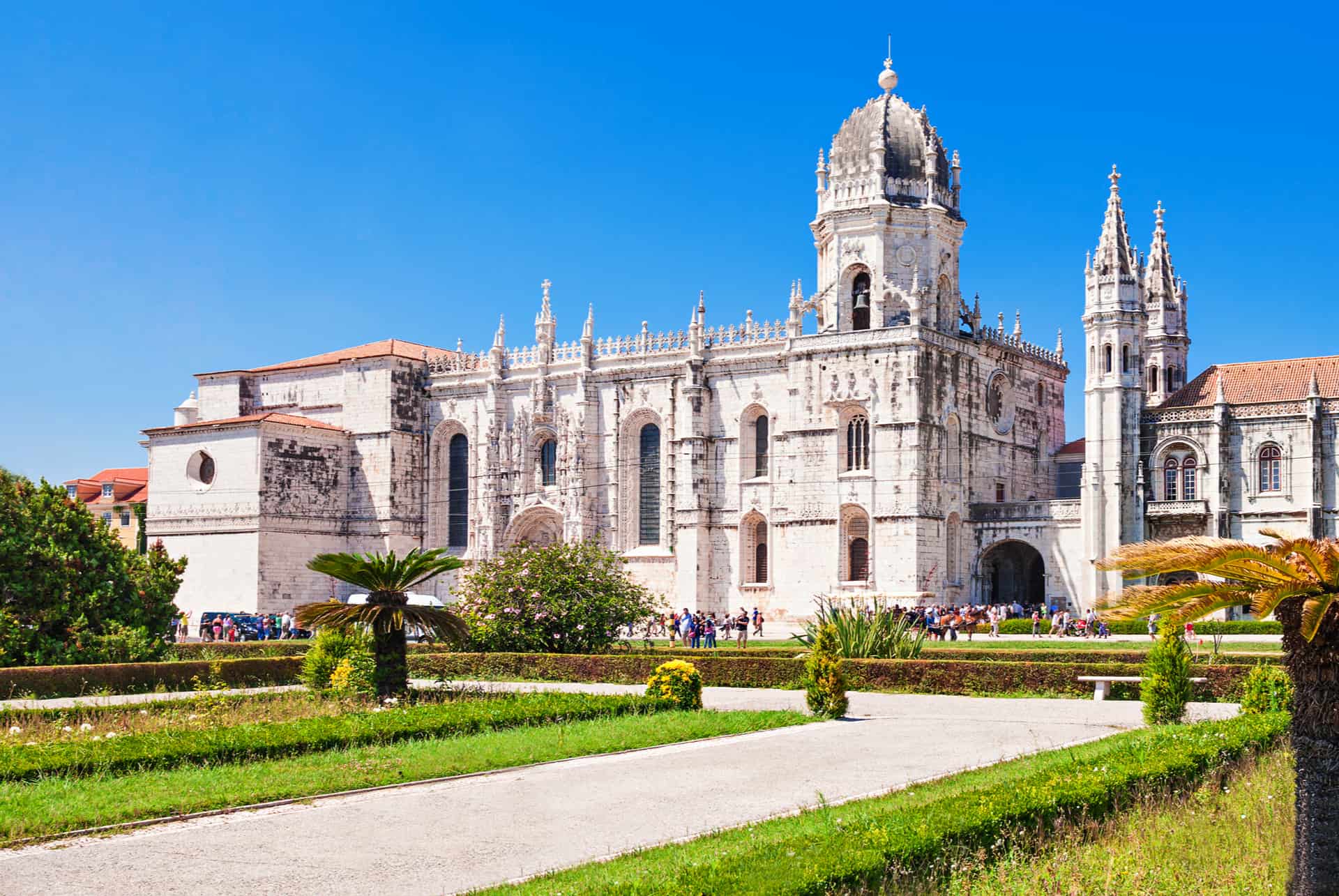
Lisbon Card
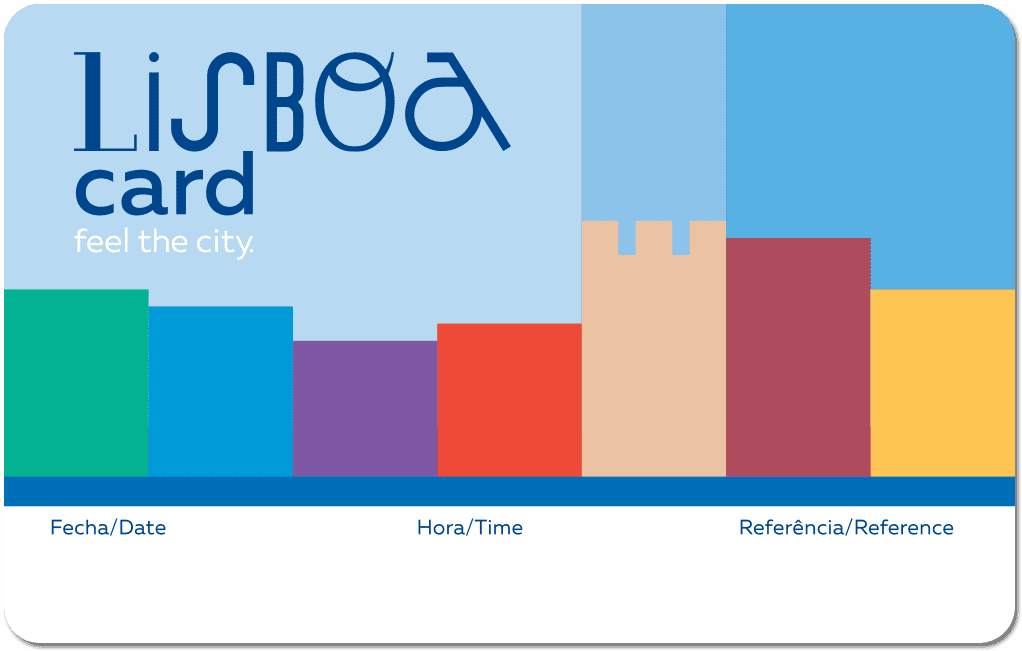
If you are visiting Lisbon for a few days, I can only recommend taking the Lisboa Card. The Bélem Tower and the Monastery are among the 25 monuments and museums included in this pass and, as a result, they benefit from priority access.
You will also be able to travel unlimited by public transport (including the famous tram 28), go to Sintra and Cascais by train and you will be entitled to various reductions on numerous sites, restaurants… For one day, the pass will take you comes to €22 and for 3 days, it costs €46 😉
Find out more about the Lisboa Card by clicking here
Little Sweet Break
After these two visits, head to the Fábrica Pastéis de Belém. This is where you will find the best Pastels de Nata, a mini flan tartlet that can only be found in Lisbon.
The recipe hasn’t changed for over 150 years! A MUST try if you come to visit Lisbon in 3 days.

If you like museums, there is the Berardo Museum next door and entry is free. It is a huge private collection of modern and contemporary art offered by a private collector named José Berardo.
I then suggest you walk along the Tagus and return to the center of Lisbon to eat at the Time Out Market Lisbon.
It’s a GREAT place to eat in a covered market with local produce and different choices for lunch. You have to go there at least once during your stay.
Cristo Rei, the Statue of Christ as in Rio de Janeiro
For the afternoon, head to the Cristo Rei statue! Funny thing, it is located in the Armada district, on the other side of the Tagus 🙂 So you will have to take the ferry from Cais do Sodré to Cacilhas.
The crossing lasts around ten minutes and the journey costs €3 for a round trip.
The Christ the Redeemer statue (like the one in Rio de Janeiro) is a must-see during a 3-day Lisbon itinerary. There are beautiful panoramas from the Armada and if you like photography, you will be served!
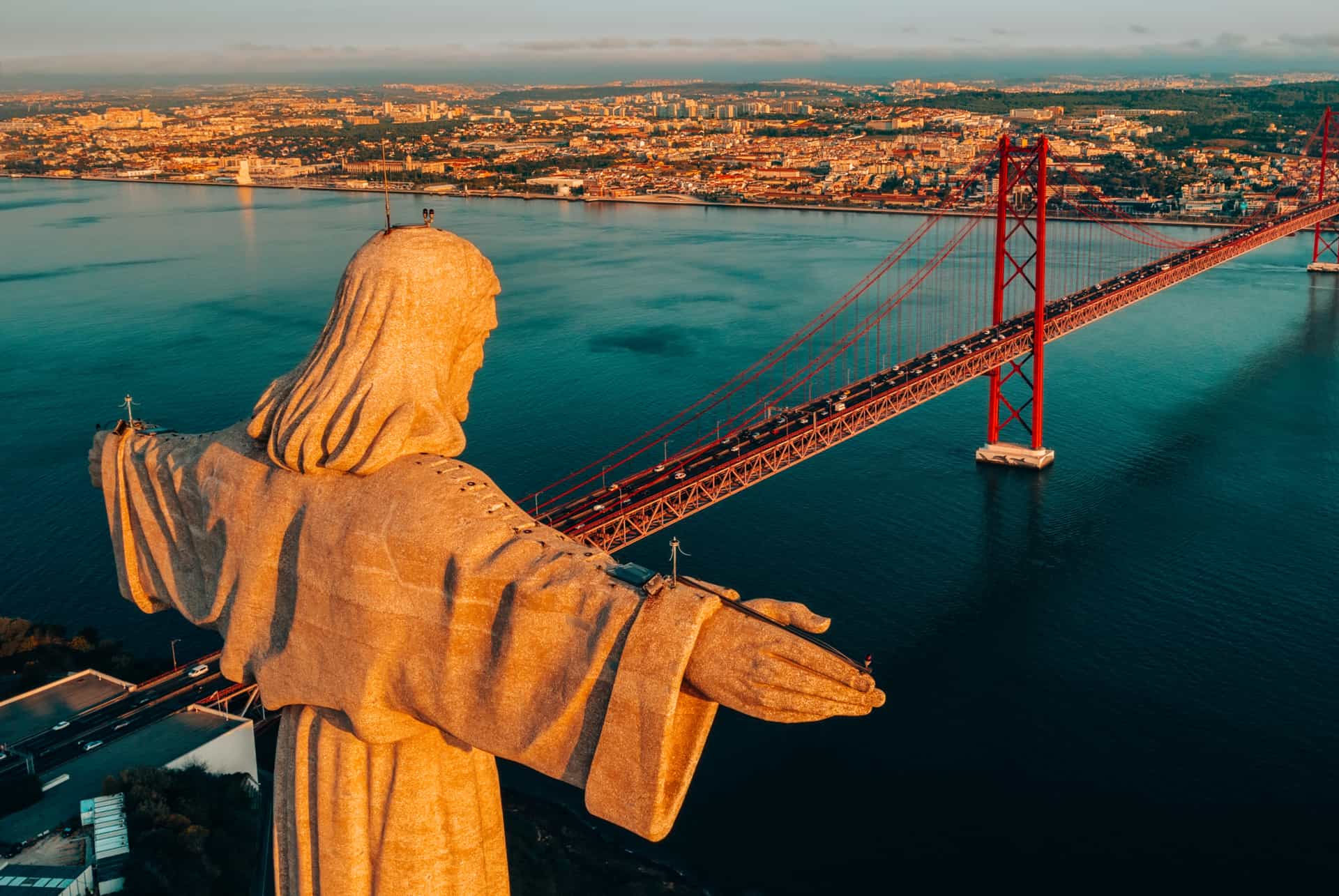
On the way back you will be directly in the Cais do Sodré district and there are many bars. It’s quite festive and it’s the ideal place to have a drink and have a good time after this second rather sporty day.
The other possibility is to take a cruise of around 2 hours on the Tagus for €19.50. You will therefore have the opportunity to see as many monuments as possible (including the Cristo Rei statue) from the river. It is even possible to do one at sunset while enjoying a drink. I won’t tell you any more.
For more information on the Tagus River cruise, click here
Day 2: Alfama and Baixa District
Discover Alfama and take tram 28
After a restful sleep, it is time to start this second day in Lisbon. Let’s go and explore the historic district of the city, the Alfama district.
This is my favorite neighborhood, because the streets are narrow and full of charm and there are superb views of the sea (if you like photography, you will be delighted during your visit to Lisbon).
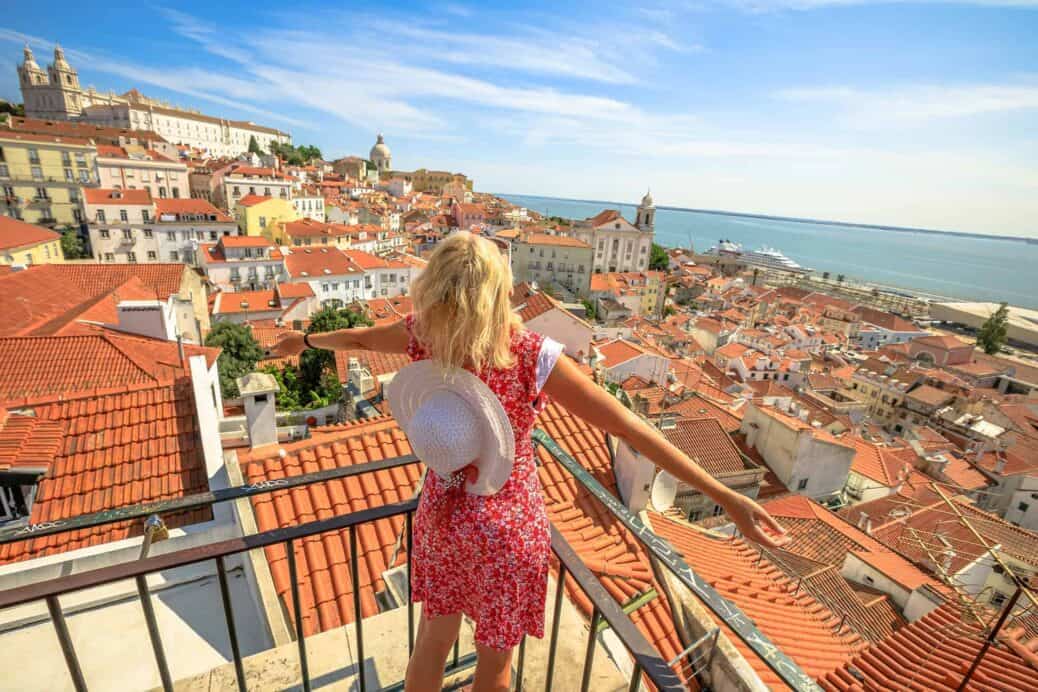
The Alfama district is the oldest district of Lisbon. It was initially the neighborhood of the poor, then the neighborhood of sailors and finally today it is one of the most authentic neighborhoods of the city.
It is also in this district that you will find the legendary line 28 and its yellow tram straight out of another age.
I recommend taking it for a few stops to discover this neighborhood aboard the famous tramway. Don’t hesitate to walk and get lost in this area. There are superb places at the bends of the small streets.
If you don’t know what to do in Lisbon during your 3 days, you ABSOLUTELY have to go to the Alfama district.
ACTIVITIES IN LISBON
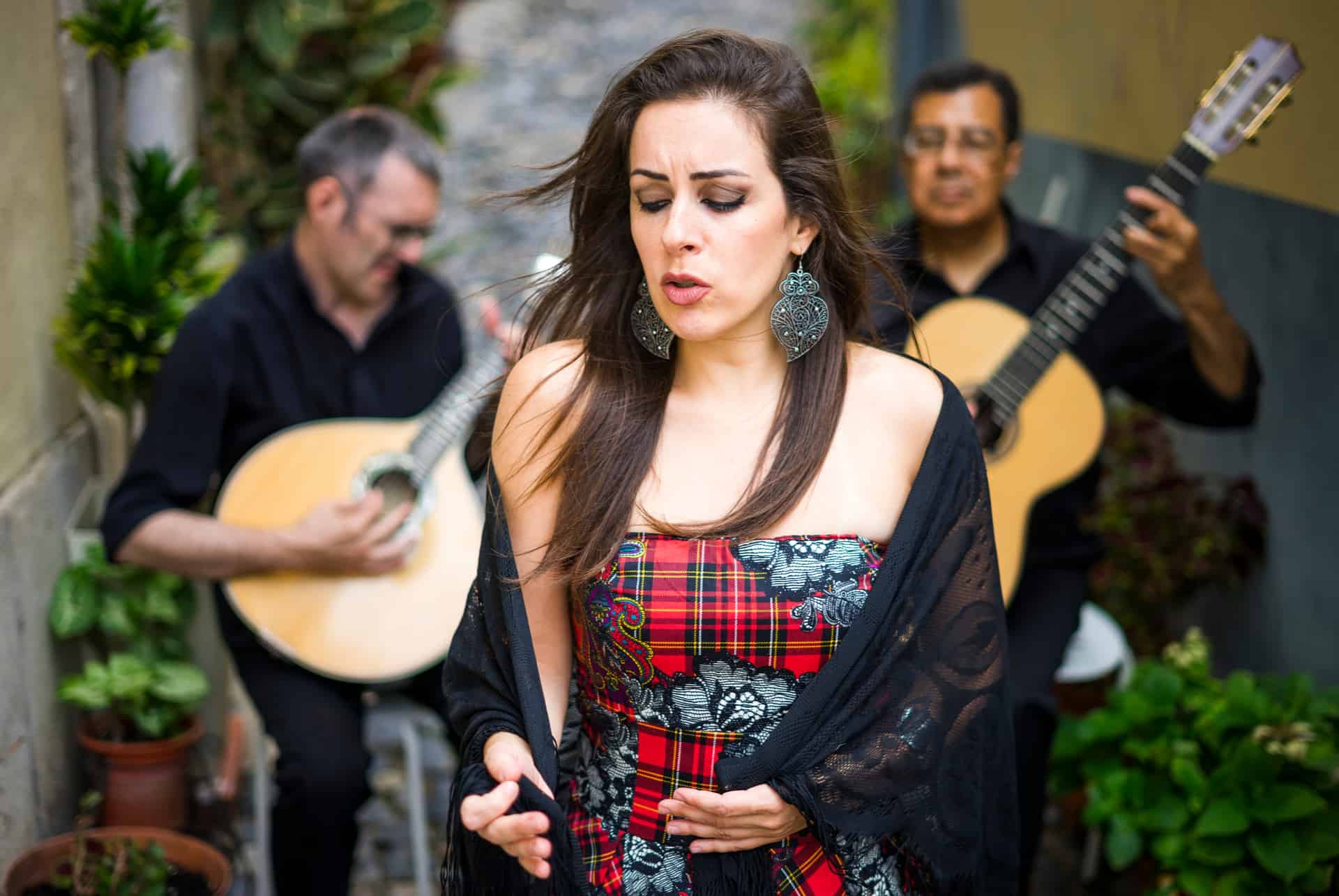
Are you leaving for your stay in Lisbon soon and you haven’t yet booked your activities?
I advise you to plan ahead, this destination is very popular all year round and it would be a shame not to be able to do the visits and activities you want to do because you don’t have space.
Between twilight cruises on the Tagus, tastings of typical dishes, fado shows and visiting the city’s must-see places, I’m sure you’ll find what you’re looking for.
Click here for an overview of activities to do in Lisbon
Discover the São Jorge Castle
Be careful, the Alfama district is on a hill, you will have to climb a little in the streets to get to the Castelo de São Jorge, a castle which dominates the city of Lisbon.
On the program of fortified ramparts, breathtaking views of the sea and the city of Lisbon, the visit to the Castelo de São Jorge is a must in Lisbon.
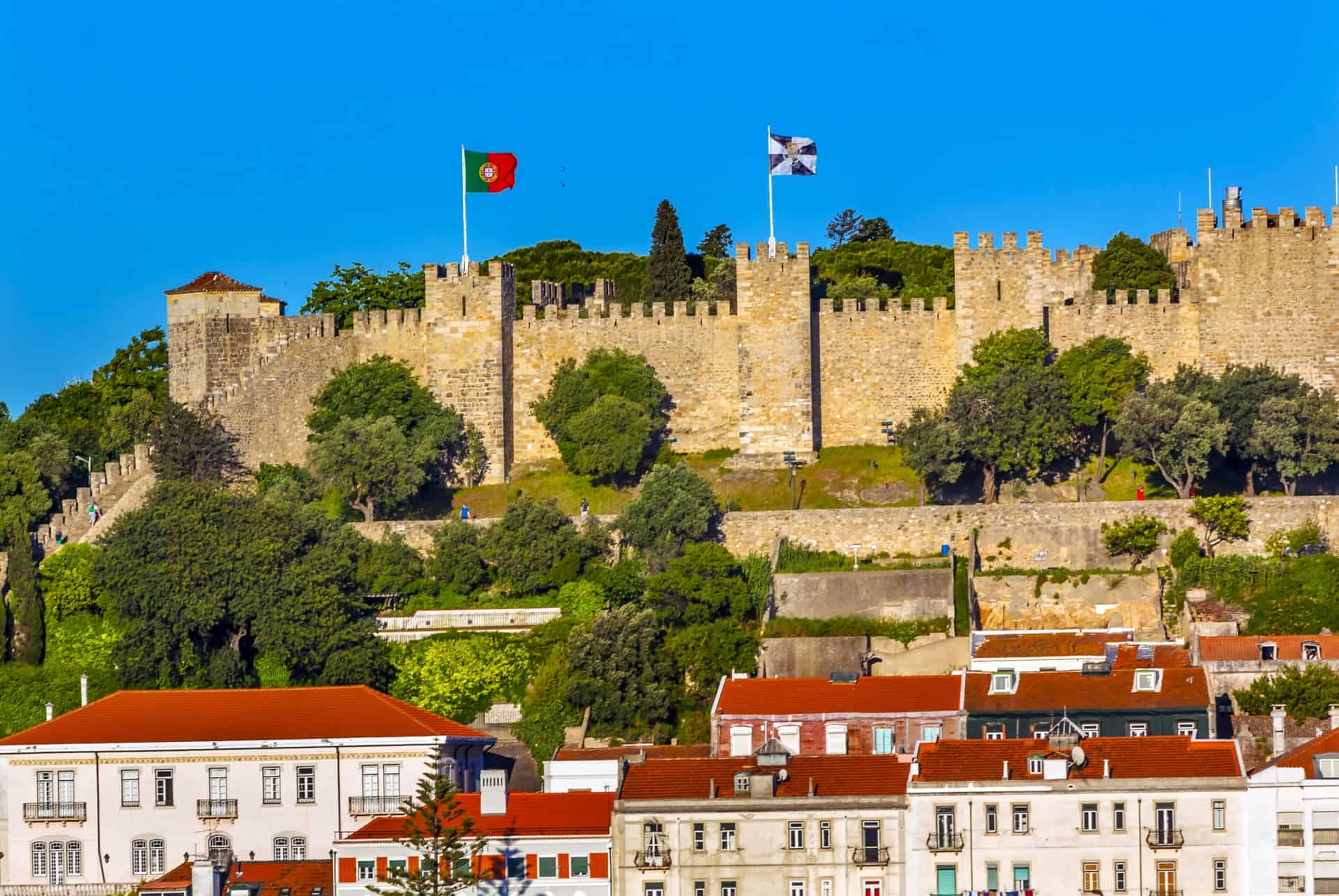
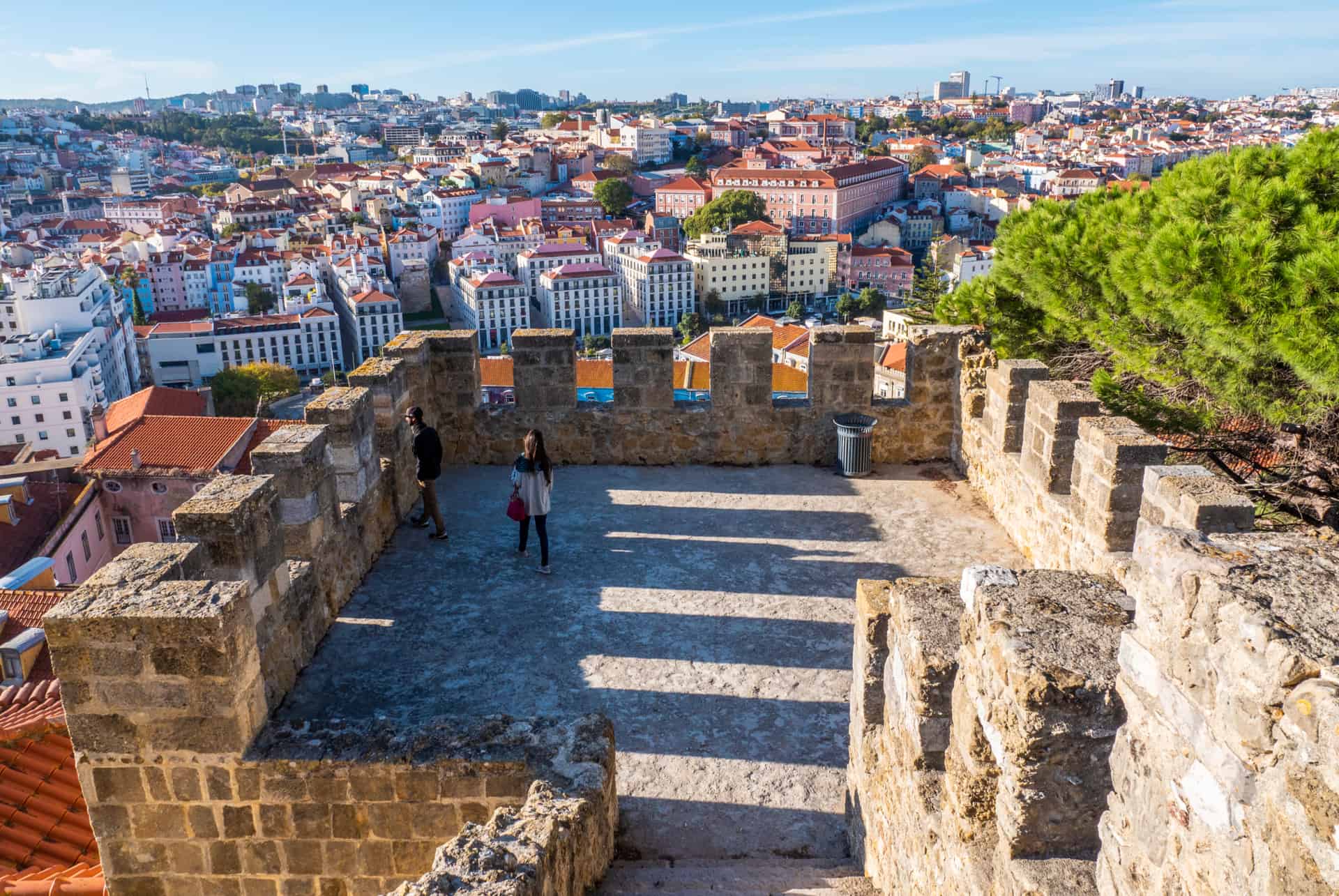
To access it, you will need €15 per adult and less than €10 for those under 25. You can reserve these tickets on the official castle website. This place offers great views of the city!
You can learn more about the history of Lisbon by choosing the guided tour of Saint George’s Castle. This ticket also includes free time to enjoy the breathtaking view and of course you will not need to queue in case of large crowds. Allow €29 per person.
Click here to reserve your priority access to the castle
Praça do Comércio
Going down from the Alfama district and returning towards the Tagus, you will arrive at Praça do Comércio, Lisbon’s commercial square.
You can’t miss it, it’s a superb and still lively square located in the Baixa district.
A pedestrian street, Augusta Street leads to Praça do Comércio, passing under a triumphal arch. The square is really big and opens onto the Tagus.
There are buildings in pastel yellow/orange colors (these are the main Portuguese ministries). In the middle of the Commerce Square, there is the statue of José I, the king of Portugal who rebuilt the city in 1755 after big earthquakes.
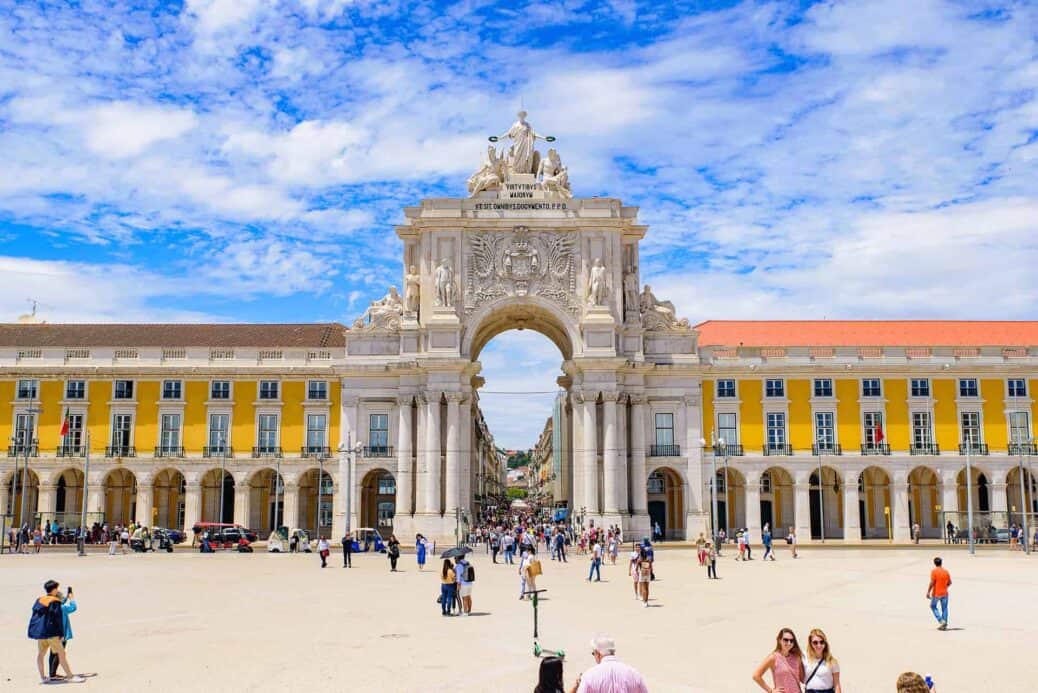
Day and night, this square is lively I like to go there to drink a little coffee or to walk along the water. Don’t stay too long in the square, you will come back several times over the next few days if you come to visit Lisbon in 3 days.
For the rest of the day, you can continue to stroll along the pedestrian street Augusta to discover the small shops and do a little shopping or window shopping.
For your first evening in Lisbon, I advise you to eat in the Baixa district, there are several restaurants with terraces overlooking pedestrian streets.
If you’re looking for somewhere to eat in the Baixa neighborhood, I recommend two restaurants: À Minhota da Prata and Organi Chiado. It’s really very pleasant and above all these addresses are super good.
Then depending on how tired you are, head to a fado concert, this typical Portuguese music, in the Alfama or Bairro Alto district.
If you visit the city in 3 days, you must at least go one evening to a Fado concert in Lisbon. It’s a must-do activity when traveling to the Portuguese capital!
See the schedule of fado concerts for your dates by clicking here
The Oceanarium

If you still have a little time left and you are in Lisbon with your family, I advise you to go to the Lisbon Oceanarium!
It is located in the heart of the Parc des Nations district , on the banks of the Tagus and it is the second largest aquarium in Europe!
You will be able to admire more than 15,000 animals and plants of more than 450 different species in a faithful reconstruction of their natural habitat.
Indeed, the environments of the Atlantic, Pacific, Indian and Arctic oceans have been reproduced and it is truly impressive!
This oceanarium aims to introduce the public to the marine world in different parts of the world but also to raise awareness among as many people as possible of the importance of doing everything possible to save the oceans.
The whole family will have the opportunity to learn more about how the oceans work and the need to preserve these ecosystems. Entrance costs €25 for adults and €15 for children aged between 5 and 12.
Click here to book your entry ticket to the Oceanarium
Day 3: Discovering Sintra
So yes, there are other things to do in Lisbon, but for this third day I suggest you go visit Sintra from Lisbon, because it is simply a must if you come to visit Lisbon in 3 days in my opinion !
It will take about a 30-minute drive (28 km) to get to Sintra from central Lisbon.
You can get there by car or by train from Lisbon in around 40 minutes. I remind you that if you opt for the Lisboa Card, the train journey is included in the pass 🙂
On the program for the day, the discovery of the Pena Palace and the Castle of the Moors.
The Moorish Castle
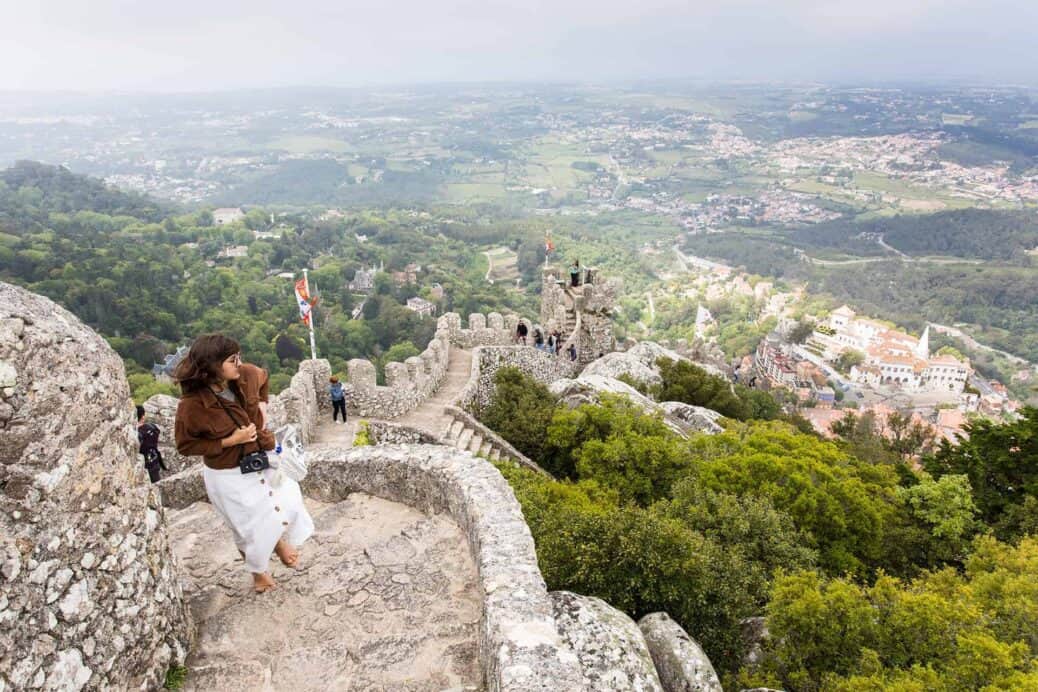
We begin the visit with the Château des Maures which offers superb views of the surrounding area. For the record, this castle was built in the 9th century by the Moors from the Maghreb.
This castle was used to monitor the city of Sintra. Today only ruins remain since the castle was abandoned after the reconquest of Portugal.
We stroll peacefully on the ramparts lost in the forest. A little more and you’ll feel like you’re on the Great Wall of China. It will take about an hour for the visit. The castle is open 7 days a week from 9:30 a.m. to 8:00 p.m. during the summer season.
Click here to book your skip-the-line entrance ticket to the Château des Moors
Pena Palace
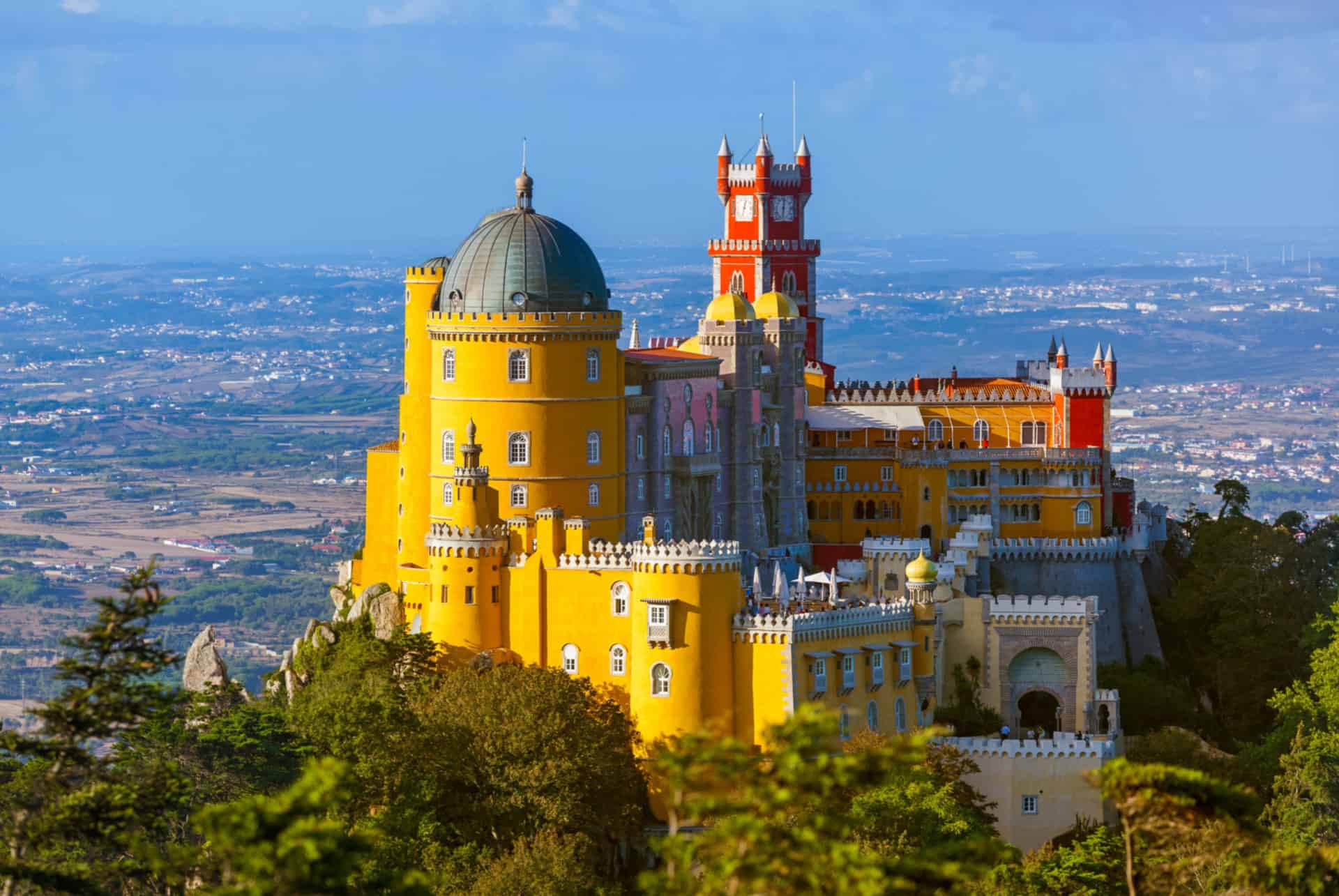
Well after this little appetizer, a visit to the Pena Palace is a must in Sintra! This palace is just CRAZY.
You wouldn’t think there would be such a colorful palace in the middle of nowhere in Portugal.
The interior as well as the exterior are to be discovered. It is the most visited palace in Portugal with almost a million tourists each year.
The Pena Palace is surrounded by a park, it is very pleasant to walk there and you can go back down to the town of Sintra by taking the path in the middle of this huge park. To visit the entire palace (exterior and interior), it will take approximately 2h30.
I advise you to get on the bus and get off via Pena Park. The walk is superb with small paths (they are shaded), thousands of flowers, parts of forests but also small lakes. It’s really cute!
To visit Sintra, it is better to leave during the day. Between the two visits and transportation, your day will already be busy!
Entrance to the park and the Pena Palace is not included in the Lisboa Card at this time, but you can still benefit from a small reduction (around 10%) if you present the pass at the ticket office.
This place being very popular, despite the potential reduction that you can have with the tourist pass, I recommend that you buy your tickets in advance.
Two options are available to you: you take a classic ticket or you go on a guided tour which will include Sintra and other places during the day. The guided tour will generally depart directly from Lisbon.
Click here to book your entry to the Pena Palace and Park
When you return, in the evening, I advise you to go for a drink on a Lisbon terrace while enjoying the view and the sunset. I’ll give you right away my best addresses to enjoy a view of Lisbon.
My Accommodation in Lisbon

If you don’t yet know where to stay in Lisbon, I advise you to spend the three nights at Browns Boutique Hotel, which is located in the center of Lisbon, a 5-minute walk from Chiado and Bairro Alto.
This charming hotel, with elegantly decorated and spacious rooms, benefits from an ideal location. All around, there are numerous restaurants, cafes and shops and the famous tram 28 stops 50 meters from the hotel. For one night, count from €90 for a double room 😉
To see more photos & hotel availability, click here
The Best Viewpoints in Lisbon
To close this article, I will quickly present to you some points of view which will allow you to admire this beautiful city of Lisbon.
The list is not exhaustive, and the selected places can easily be integrated into your program during your short stay.
Santa Justa Elevator
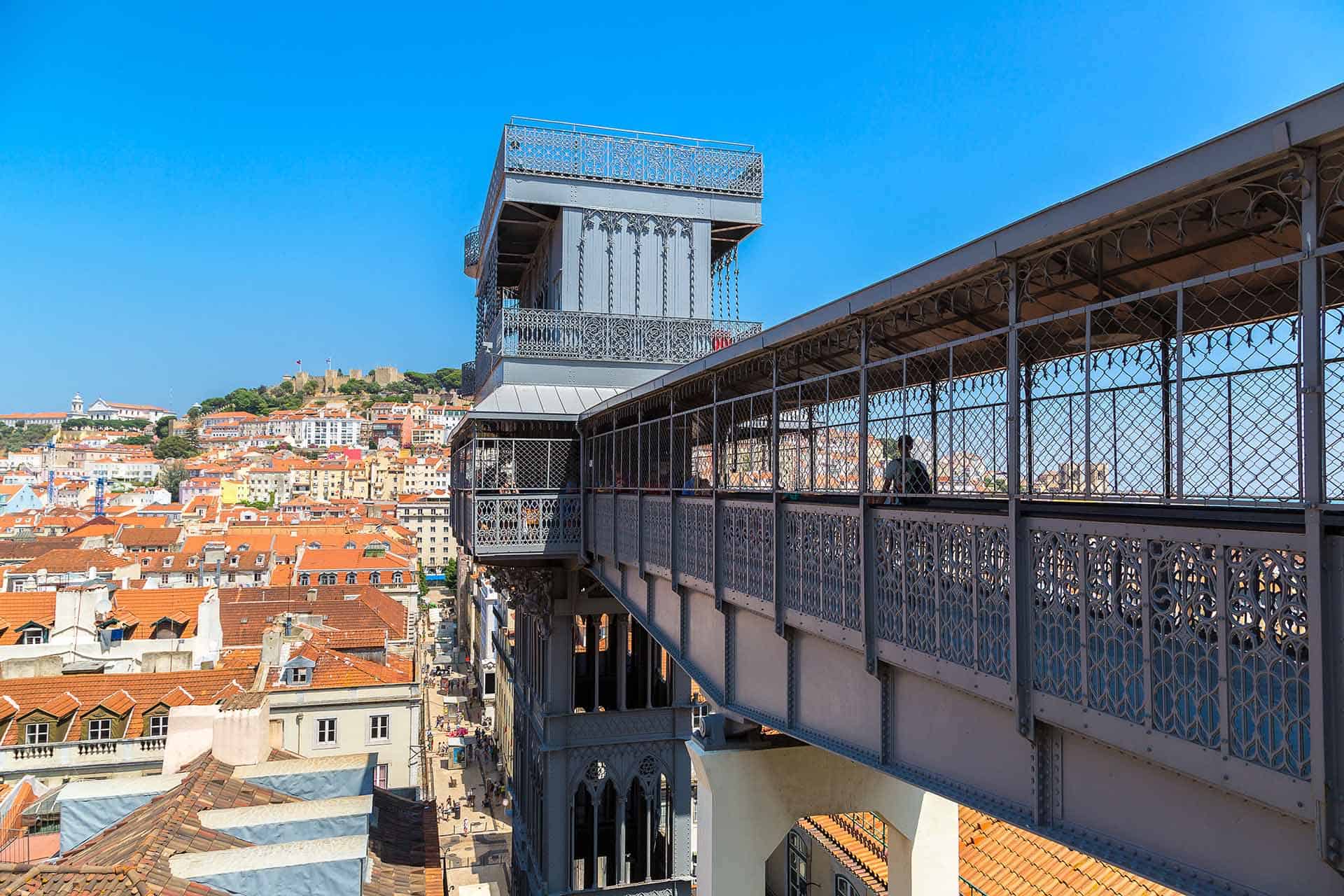
This building which is located in the historic center of the city of Lisbon will allow you to gain height in the very heart of the city. This is an elevator to connect Baixa Pombalina to Bairro Alto. It is the city’s only historic urban elevator that is entirely vertical. The other elevators are considered funiculars.
If you opt for a Lisboa Card, access to the elevator is included in the content of this tourist pass. You might as well take advantage of a visit there during your stay!
The 25th of April Bridge
If during your trip to Lisbon, you are going to discover the Statue of Christ the King, there is a good chance that you will take this famous bridge!
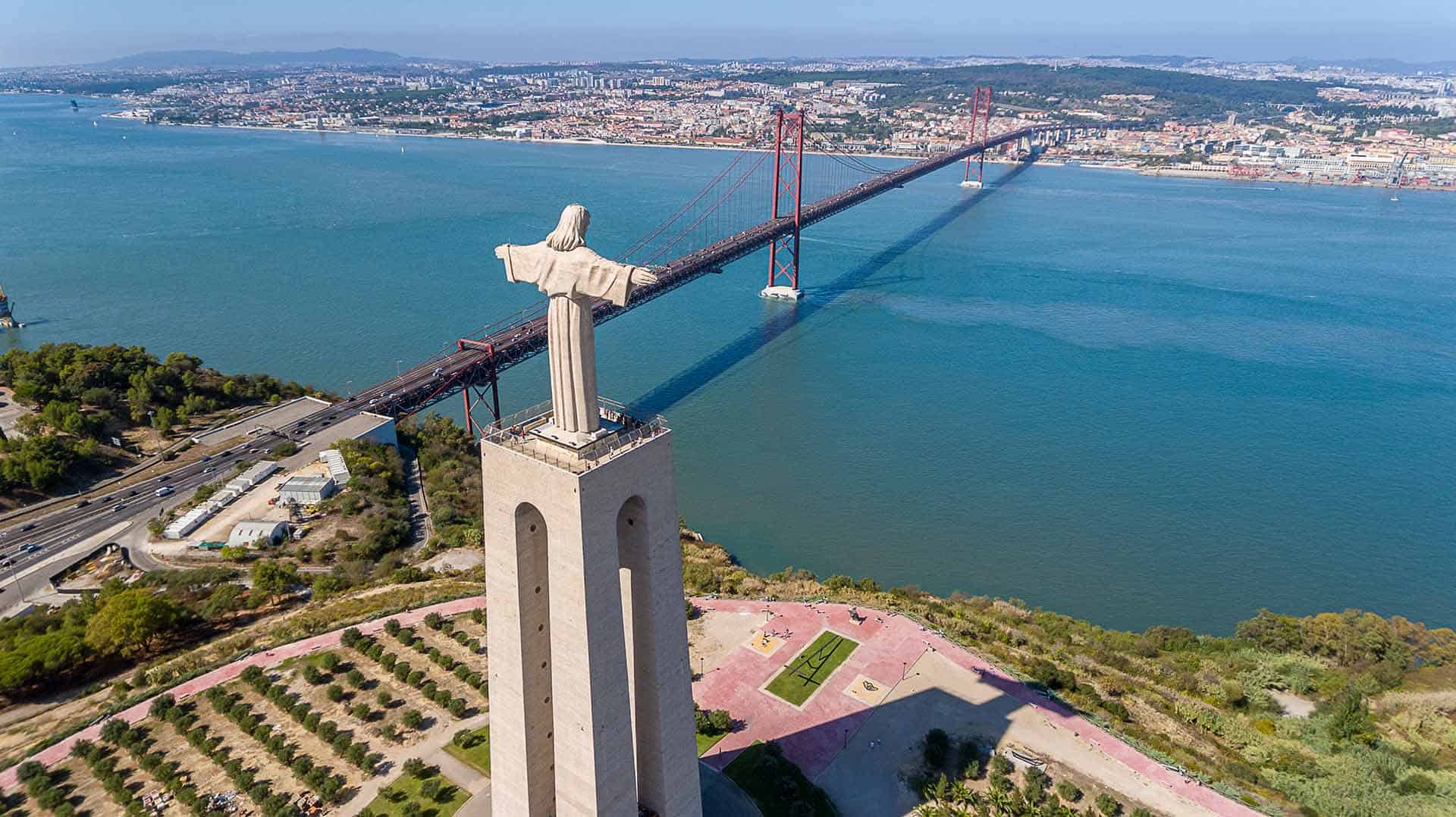
If this is the case, take the opportunity to admire the landscapes around you. You will have on one side, a beautiful view of the city of Lisbon, and on the other side, a view of the famous statue. There is even a good chance that you will be confused if you were already in San Francisco and Rio de Janeiro, because you will find similarities there!
I recommend that you make different stops to enjoy different points of view!
I think it’s one of my favorite viewpoints over the city even if you won’t necessarily be up high (unless you opt for the view from the top of the statue which costs).
Senhora do Monte Viewpoint
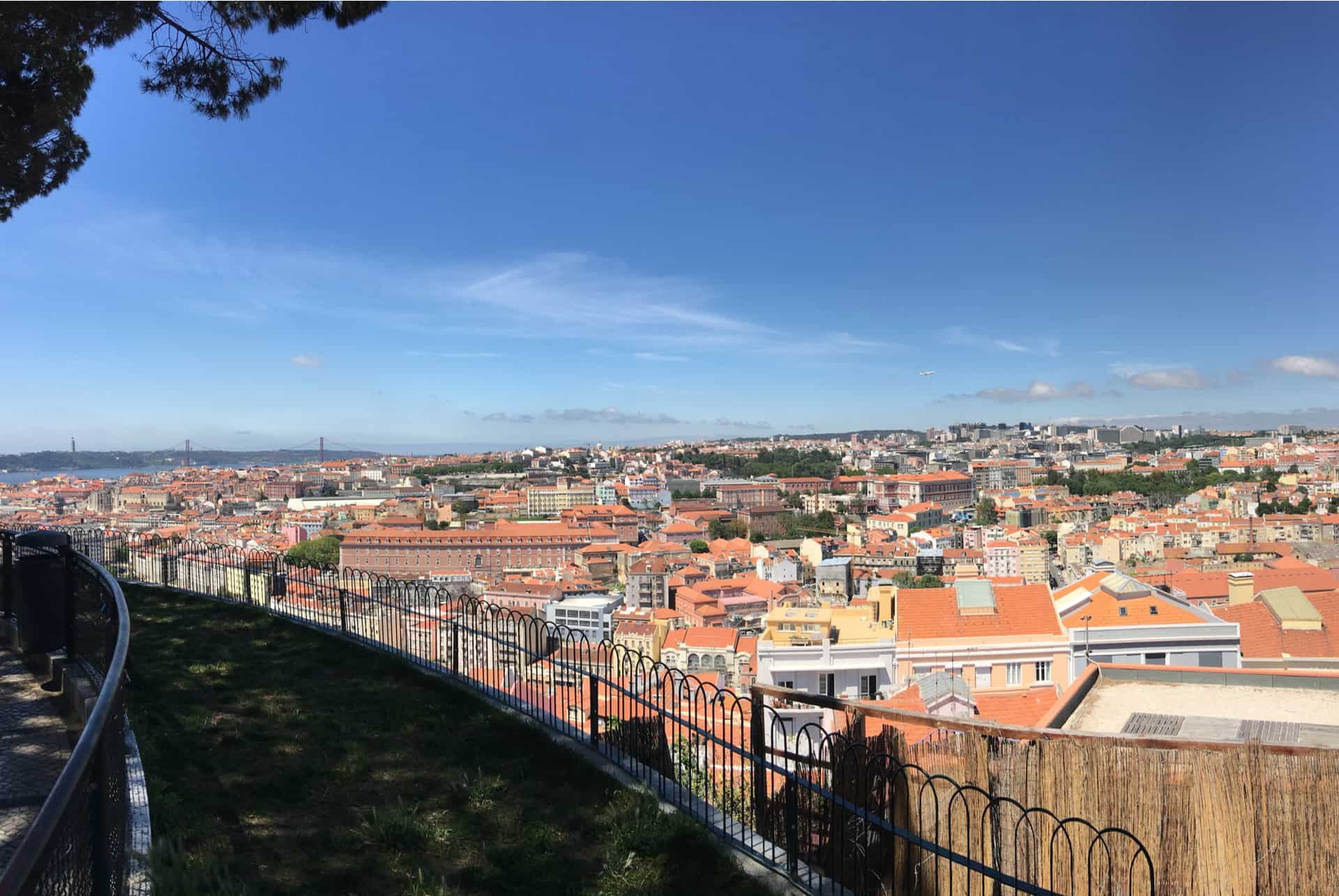
To admire one of the most beautiful views of Lisbon, you will have to go up to the Miradouro da Senhora do Monte belvedere.
From this place, you will enjoy a panoramic view of the city! This is the highest viewpoint in the capital. To brighten your eyes even more and take your breath away, I can recommend going there at the end of the day, during a sunset.
The more sporty can get there by taking the calçada do Monte on foot from the city center. For others, I reassure you, you can use tram number 28, the bus or take a taxi.
A place not to be missed during your stay if you like panoramas. You will not be disappointed, I can guarantee it!
Here we are at the end of this article on how to visit Lisbon in 3 days. I hope the information was useful for you to make the most of your stay in Lisboa.
If you have any recommendations, questions or suggestions, do not hesitate to share them in the comments section.
Are you going to Portugal? Read also:
- 10 Days in Portugal: Ultimate 10-Day Portugal Itinerary
- 3 Days in Porto: Ultimate Porto Itinerary of 2 or 3 Days
- 14 Days in Portugal: Ultimate 14-Day Itinerary




